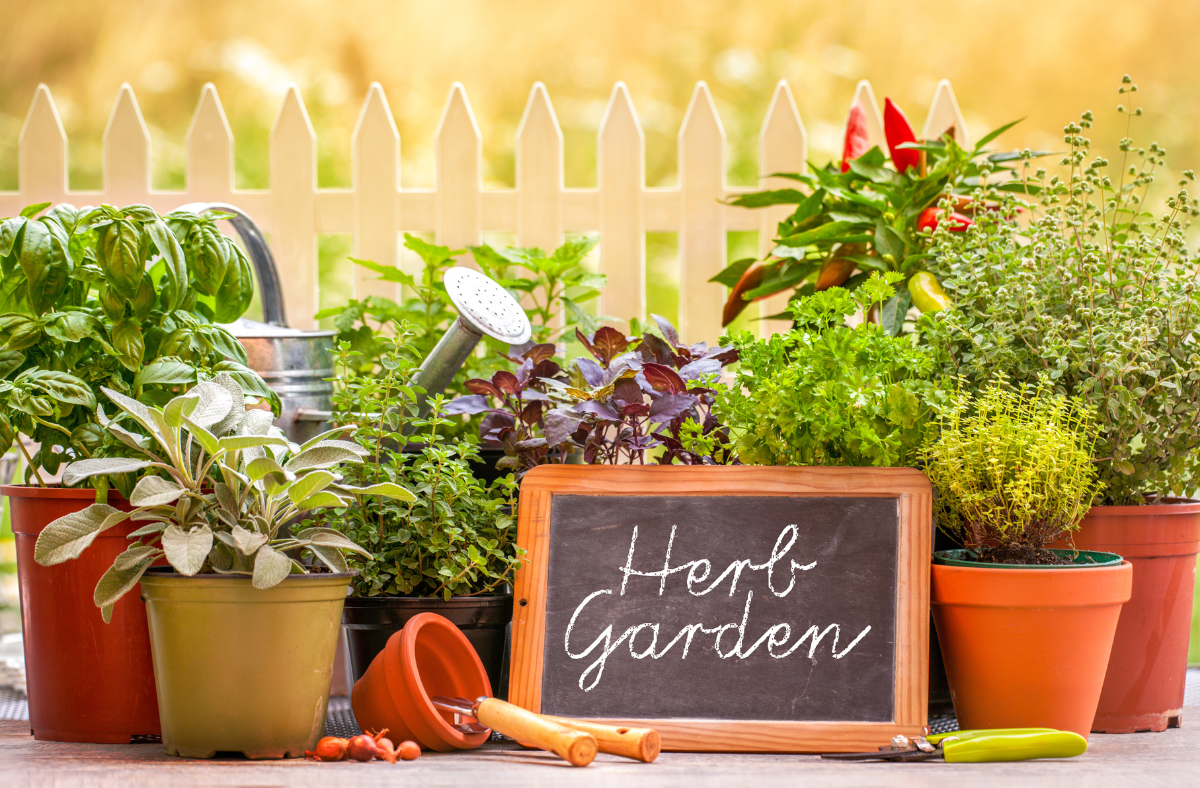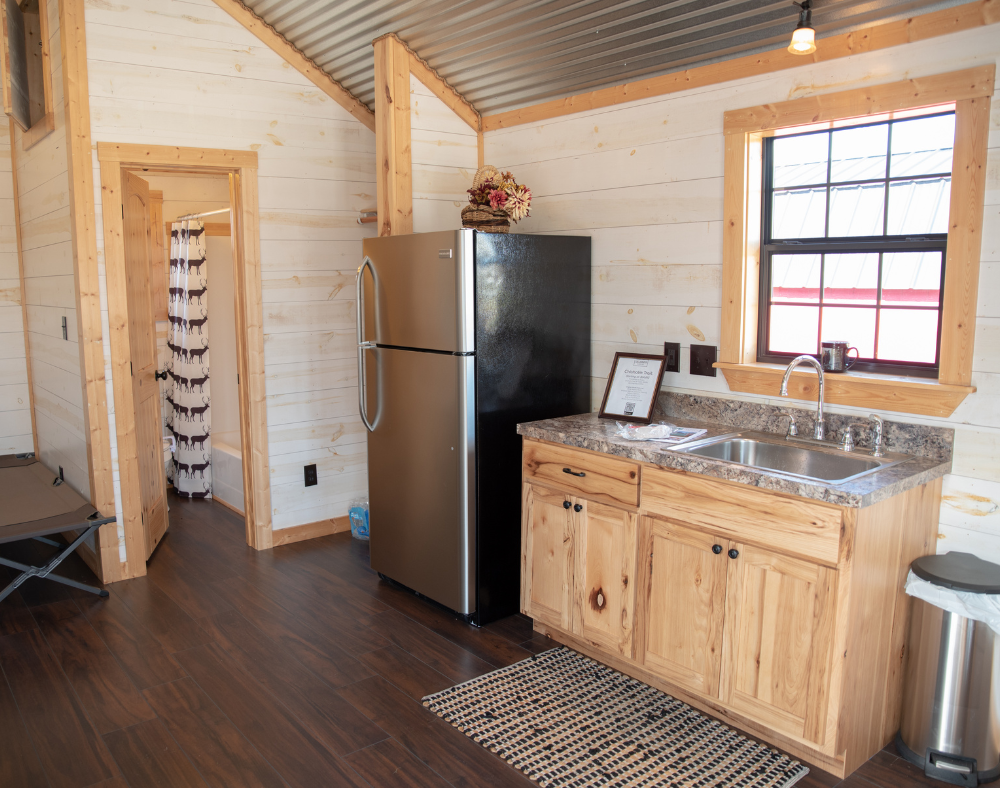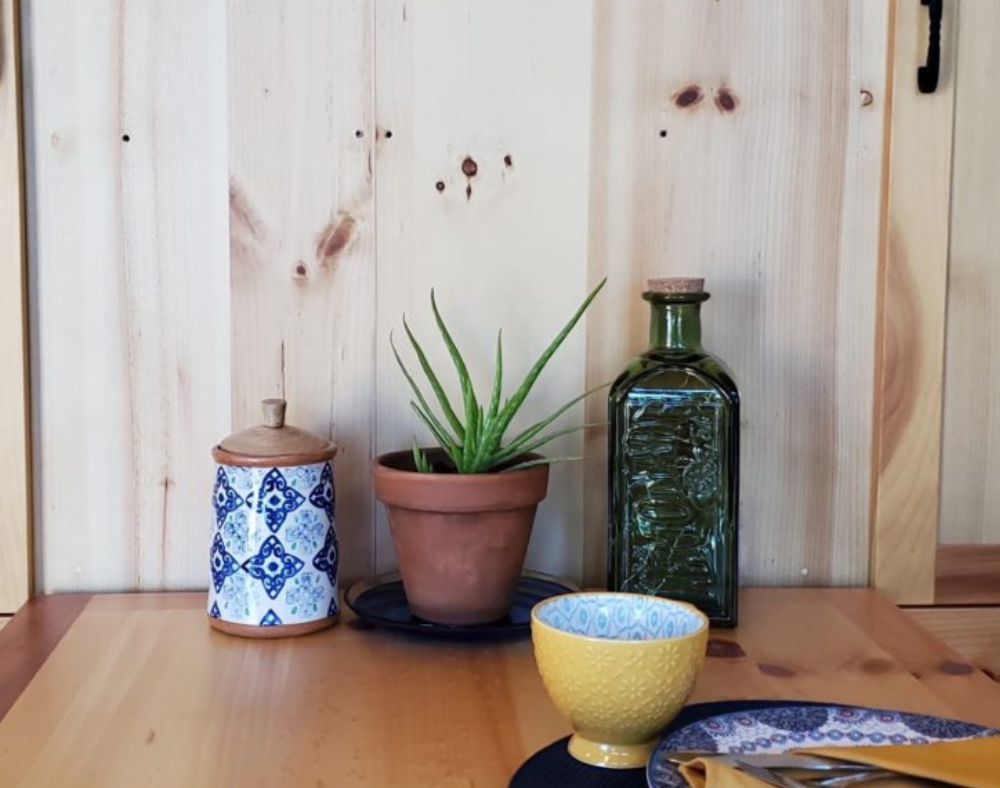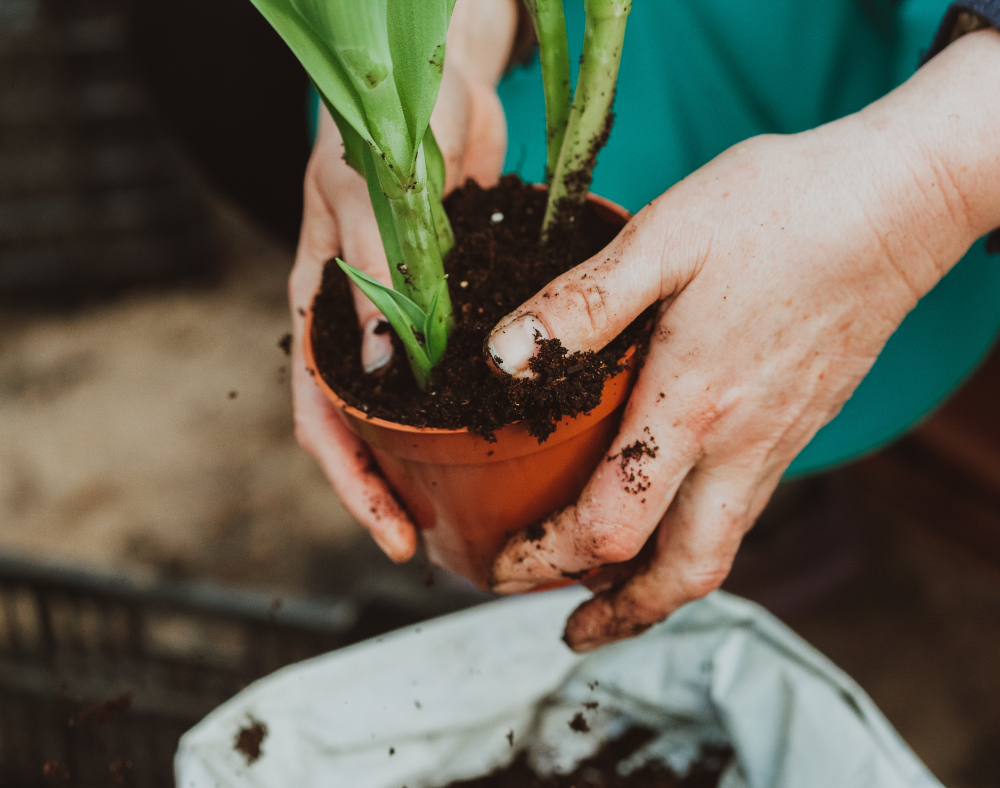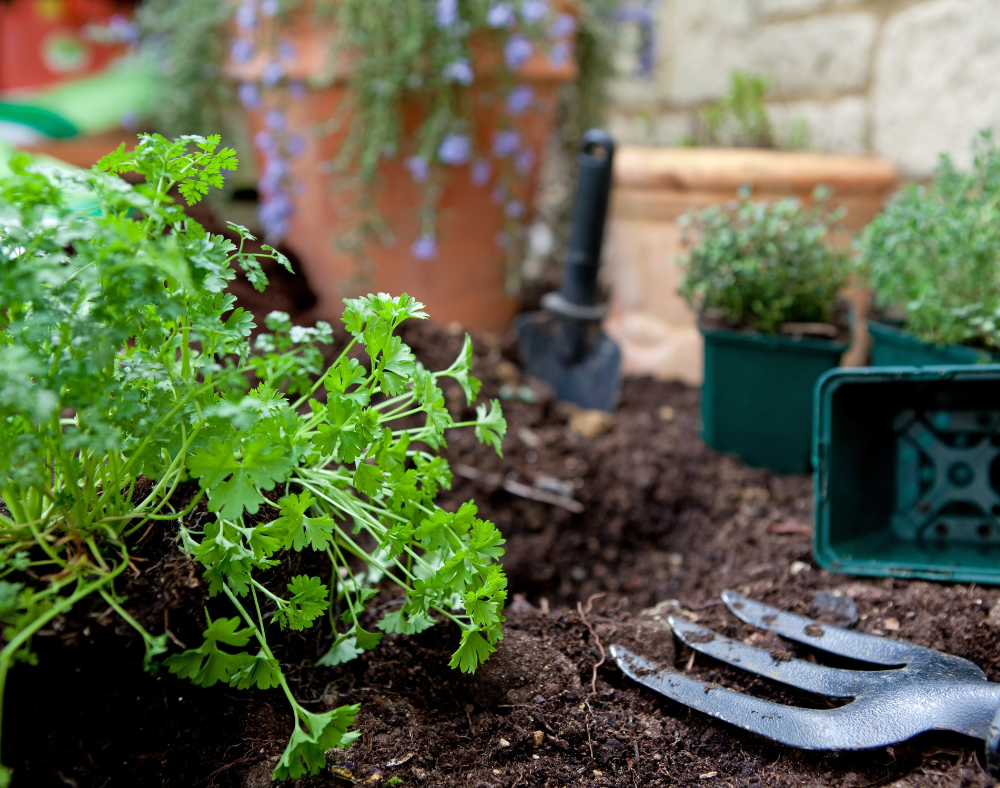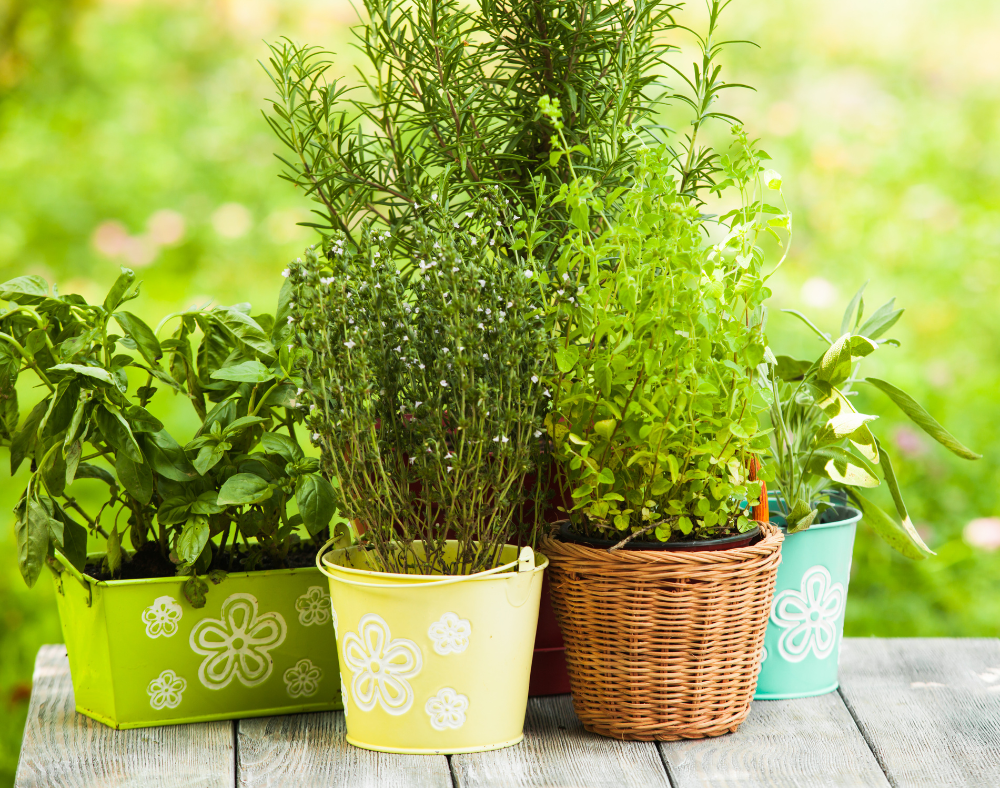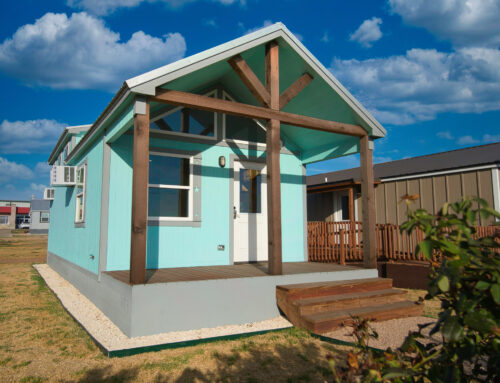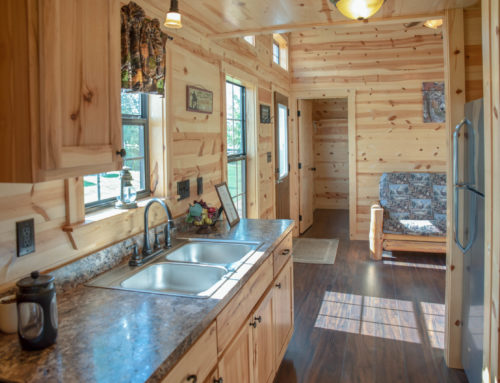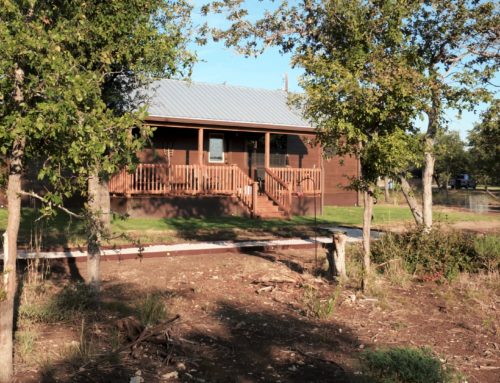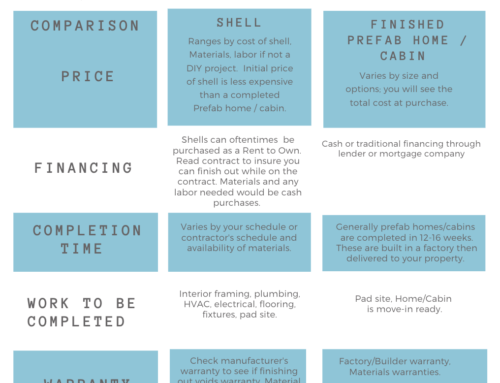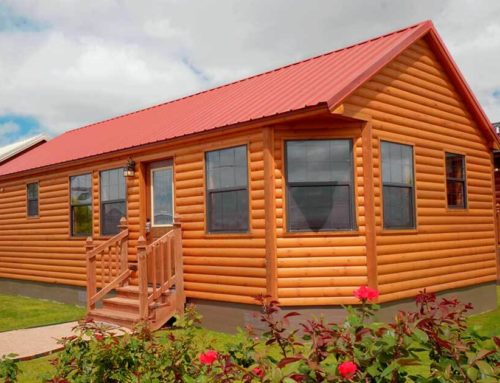On the question, of how to start a small herb garden at your cabin, keep reading and you’ll find the answer! Starting a small indoor herb garden can provide endless benefits.
Whether you want to cook healthier meals, treat yourself to some fresh herbs, or simply enjoy the benefits of homegrown produce, starting a small herb garden at your cabin can provide countless health benefits.
This article will help you and give you a couple of tips on how to start an indoor herb garden.
How to Start a Small Herb Garden at Your Cabin?
- Choose a location
Choose a spot for your herb garden.
A few feet from your kitchen would be ideal, but any position that gets around five hours of daylight every day would do. Plant the herbs in tiny containers for an indoor garden if you have space in front of a kitchen window.
- Prepare the planting area
By loosening the soil, you may prepare the space for planting. If the soil is compacted or contains heavy clay, add compost,
peat moss, or coarse sand to promote drainage.
Plant the seedlings in the early morning or late afternoon to prevent them from wilting in the midday sun.
- Prepare the planting holes
You’ll need to make larger planting holes because you’re growing herbs from bedding plants rather than seeds. Each hole
should be twice the root ball of the new plant.
- Choose the herbs you want to grow
Herbs with shallow roots such as parsley, oregano, basil, cilantro, thyme, and rosemary are the best option to grow in pots.
Herbs’ root depth varies depending on the type, but most grow to be three to twelve inches long, with some reaching up to 18 inches.
As a result, most kinds will thrive in shallow containers, allowing you to produce a variety of herbs with ease. Herbs are ideal for growing indoors on window shelves or in tiny gardens because of this.
- Plants in the soil
To give the bedding plants freedom to stretch out and thrive, space them about twice the size you want to keep the plant.
Tip: Plant taller herbs at the rear of the garden, such as sage, rosemary, and marjoram, and parsley and cilantro in the front.
- Water on a regular basis
Water the fresh transplants well. Once your herbs are established, give them an inch of water every week during the growing season.
- Herbs that have reached maturity should be harvested
Begin harvesting from the herbs as early as they would be fully developed, but just take a small amount each time. It takes longer for the plant to recuperate and develop new foliage if more than a third of it is removed at once.
Early in the summer, pull back the tops of the plants to encourage branching. Most herbs may be harvested for several months if picked carefully.
What Is The Best Soil For Herbs?
When it comes to producing herbs and vegetables, numerous types of soil have distinct qualities and might provide you with the finest results. Minerals, organic matter, and water are all components of soil. It also contains microorganisms that aid plant development.
Healthy soil will aid in the growth of your plants. Organic potting mix soil is better for growing herbs than soil that is made of sand. It doesn’t matter what the other components of the soil are as long as it is not too sandy.
The reason for this is that the sand gets mixed in with the compost that is being added to the soil. This makes the soil heavy and hard to dig. Sand has no nutrients for plants to absorb and the compost can get compacted by the sand, making it hard to dig.
Soil that is made from loam, on the other hand, is easier to dig and allows for easier absorption of nutrients. Loam soils also allow for better air circulation, which helps to keep plants healthy.
Is Organic Soil The Best Soil For Herbs?
The answer is yes, and it getting more popular. If you are growing herbs and vegetables, then you need to buy organic soil. There are many reasons why you should use organic soil. For example, most conventional soil has high amounts of harmful chemicals. These chemicals can destroy the soil and cause the plants to wilt quickly.
This can also cause the plants to produce weak seeds. You need to use organic soil to ensure that you are getting quality food. You need to fertilize with organic fertilizer, which can help your plants to grow big and healthy. The best time to buy organic soil is now.
If you don’t buy it now, you may not find it in the store later. You need to be careful when you buy it. If y
ou are planning to sell the products that you grow, you can’t just get them from the grocery store.
Final Words on How to Start an Indoor Herb Garden at Your Cabin!
In conclusion, you need to do some serious research first, which will give you a solid foundation to start. The next thing is to choose the right plants for your garden based on your climate zone, how much sun your area gets, and what kind of soil you have.
Your plants need to be able to grow in the space you have available. If you live in the north and get little light, choose plants that grow in full sun. If you live in the south and get a lot of sun, choose plants that like shade.
Author’s Bio
Tony Manhart is the founder and editor in chief at Daysingarden.com. Tony’s enthusiasm and rich experience in all things related to growing plants have led him to share his knowledge with gardening aficionados all over the world. When he is not working around his garden, Tony spends his time writing tips and tricks on various subjects related to plant cultivation and soil maintenance.

